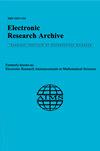Cyclostationary and energy detection spectrum sensing beyond 5G waveforms
IF 1
4区 数学
Q1 MATHEMATICS
引用次数: 5
Abstract
The cyclostationary spectrum (CS) method is one of the best at what it does because it effectively detects idle spectrum with low signal-to-noise ratios (SNR). In order to distinguish the signal in a noisy environment, gather more data that aids in a better analysis of signals, and use spectral correlation for dependable framework modelling, CS achieves optimal performance characteristics. High intricacy is seen as one of the CS's shortcomings. In this article, we suggest a novel CS algorithm for 5G waveforms. By restricting the computation of cyclostationary characteristics and the signal autocorrelation, the complexity of CS is reduced. To evaluate the performance of 5G waveforms, the Energy Detection (ED) and CS spectrum sensing algorithms based on cognitive radio (CR) are presented. The results of the study show that the suggested CS algorithm did a good job of detection and gained 2 dB compared to the conventional standards.超过5G波形的周期平稳和能量检测频谱传感
循环平稳频谱(CS)方法是最好的方法之一,因为它可以有效地检测低信噪比(SNR)的空闲频谱。为了在噪声环境中区分信号,收集更多有助于更好地分析信号的数据,并使用频谱相关性进行可靠的框架建模,CS实现了最佳性能特性。高度复杂性被视为CS的缺点之一。在本文中,我们提出了一种新的5G波形的CS算法。通过限制循环平稳特性和信号自相关的计算,降低了CS的复杂度。为了评估5G波形的性能,提出了基于认知无线电(CR)的能量检测(ED)和CS频谱感知算法。研究结果表明,所提出的CS算法具有较好的检测效果,比常规标准提高了2 dB。
本文章由计算机程序翻译,如有差异,请以英文原文为准。
求助全文
约1分钟内获得全文
求助全文

 求助内容:
求助内容: 应助结果提醒方式:
应助结果提醒方式:


